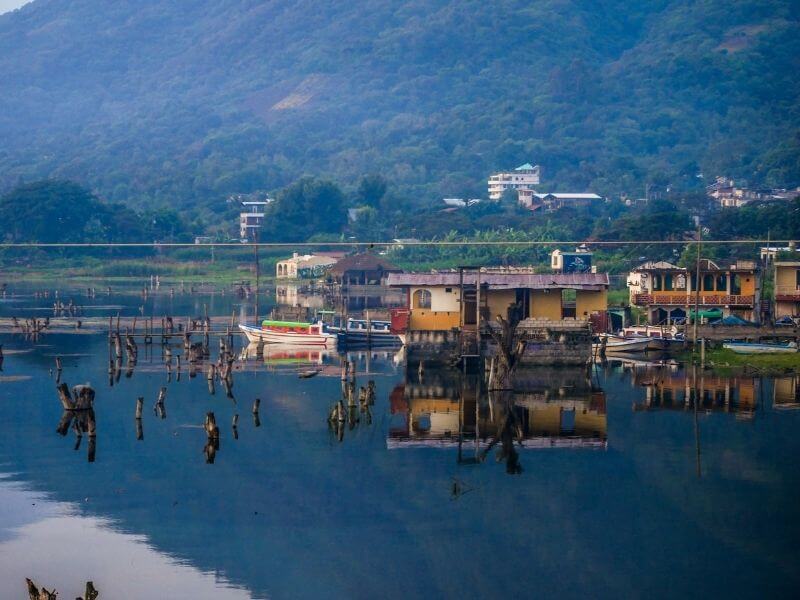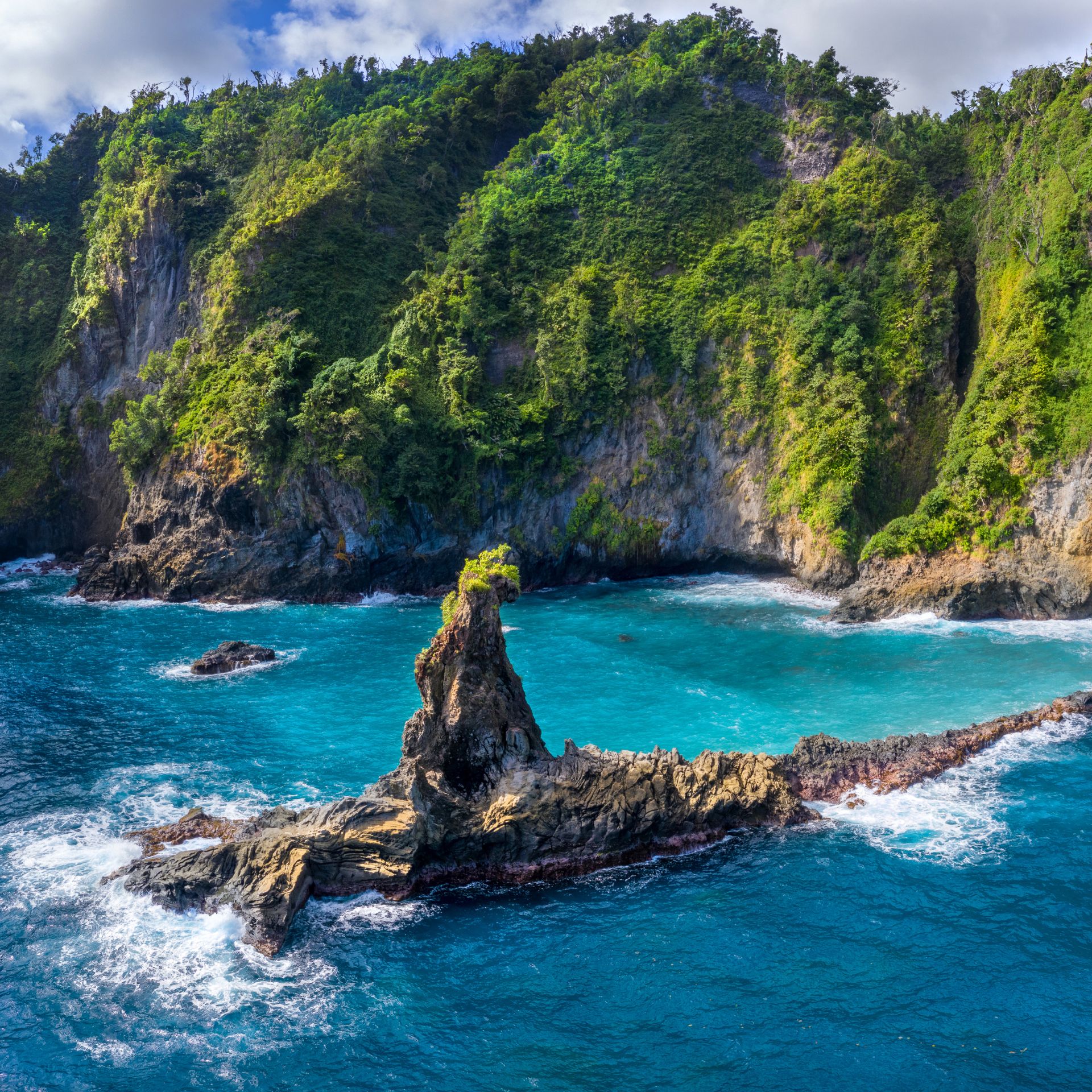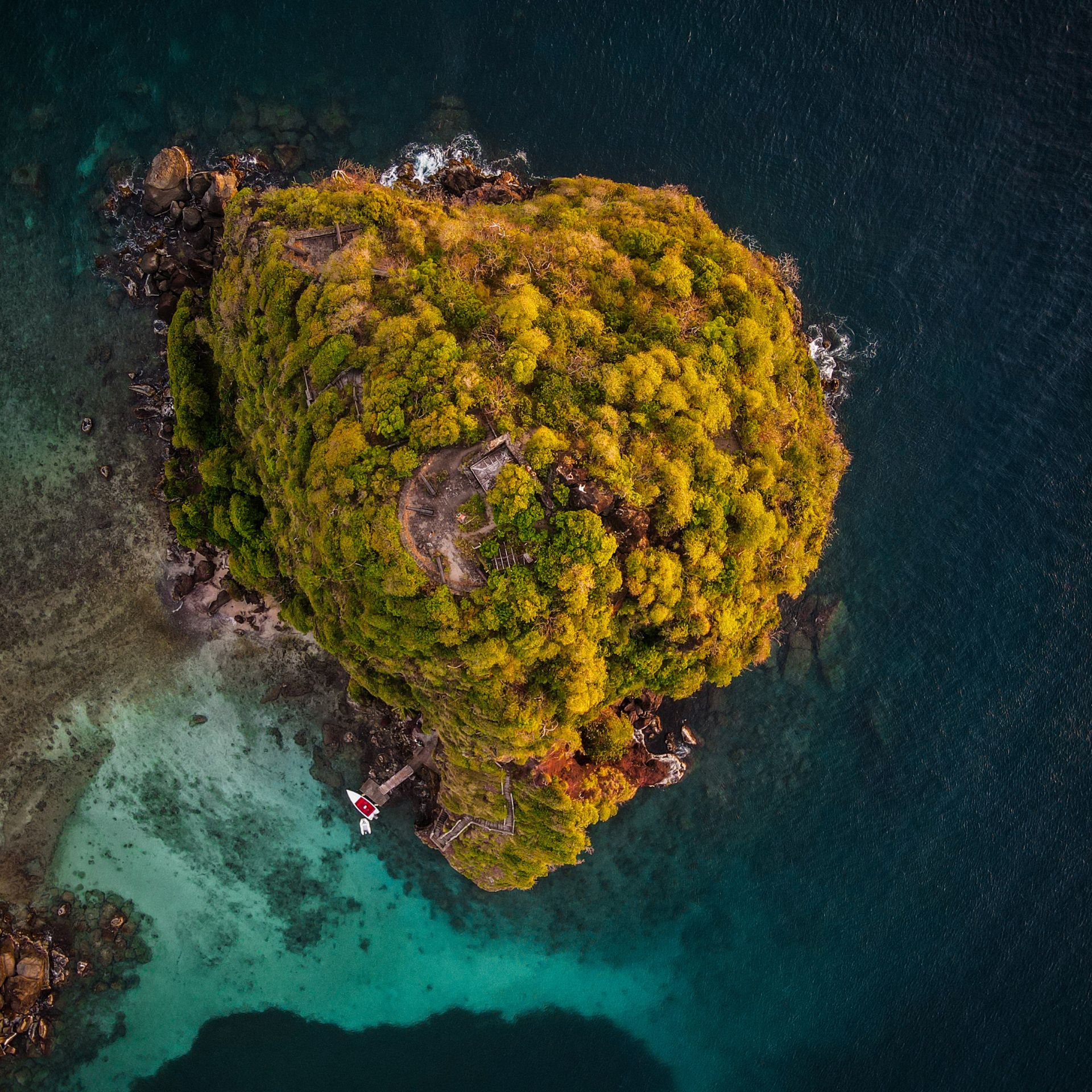Maximón is not like any other deity around the world. He is a saint who likes to drink rum and smoke cigars. Also, he is reincarnated in a wooden puppet.
Hidden somewhere among the colorful alleys of Santiago Atitlan, a small town situated on Lake Atitlan southwest Guatemala, there is a modest family house hosting one of the most bizarre saints in the world. This is the home of Maximón, a Guatemalan god that represents both the light and the darkness in life.
Arriving into Maximón’s home feels familiar, but at the same time strange and mysterious. The scent of incense and tobacco can be smelled from the outside and with only one door and no windows, it reminded me more entering into an old garage than to the residence of a divinity. Even though the whole area is full of fresh fruits and flowers, as well multicolored ribbons hanging on the walls, the atmosphere is somehow dark, discomforting and weird. In the center of the room: Maximón’s wooden body dressed in a suit and his two bodyguards.
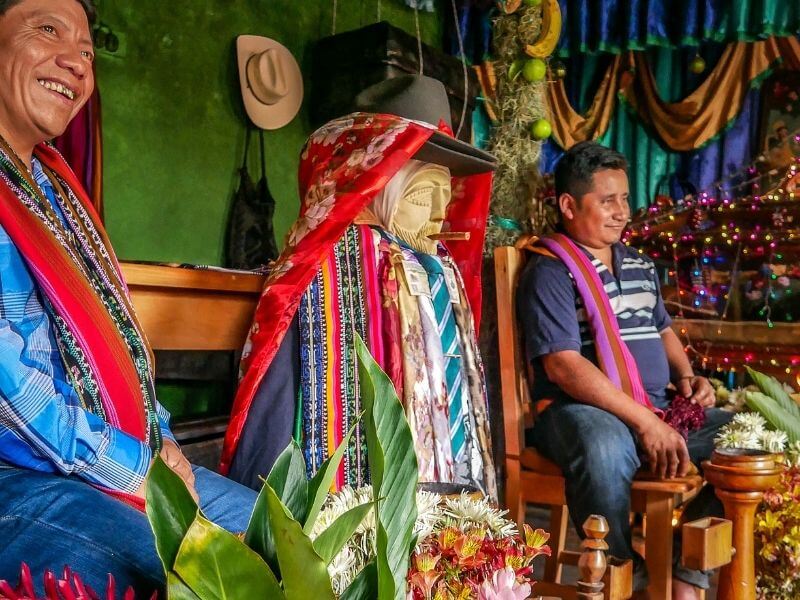
As a foreigner visiting Maximón for first time, I could not arrive without a proper offering and follow the traditional welcome ritual: greeting Maximón’s host, lightning some candles, and giving my “voluntary” offer. After that, I was finally able to sit down in front of him, pay my respects and ask for one or two personal wishes. Depending how important someone’s wishes are, Maximón’s offerings can be also cigars or quezalteca, a spirit sugar cane based very popular in the region.
Unlike other religions from all over the world where there is a different patron for each personal desire, Maximón is taking care of everything. He is the god you pray if you want some murderer to get sentenced to jail, but also if you want him going out as soon as possible.
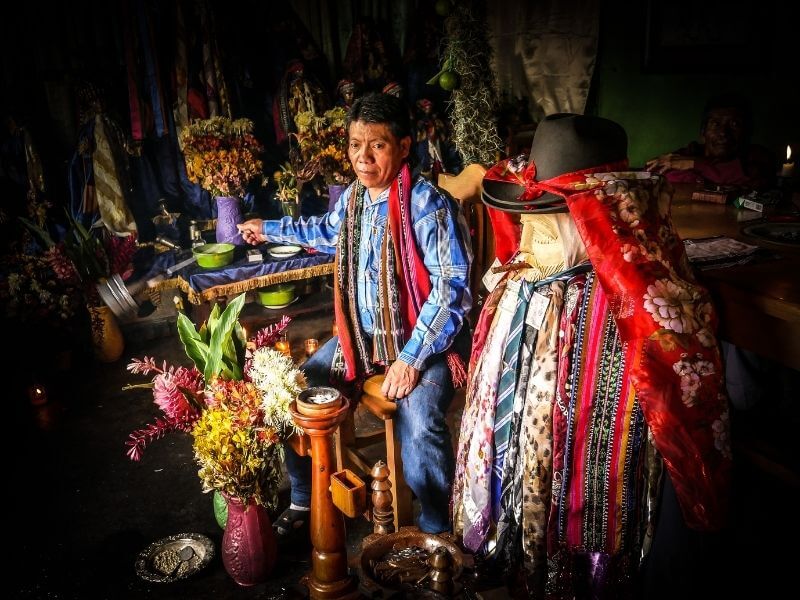
“Maximón always fulfill his promises”, said my local guide Pedro Dominguez. He was also the one talking on my behalf when I needed to ask something about Maximón. Even though my native language is Spanish and most Guatemalans speaks it too, people in Santiago Atitlan speak Tz’utujiil, a pre-Hispanic language that is nowadays in risk of extinction. Out of the four people in the room, only Pedro and one of the bodyguards could speak Spanish.

The two sides of the coin
There is something odd in seeing a wooden puppet with a lighted cigar in his mouth and also in watching how his guards pour him some liquor. But this peculiar persona is also what makes Maximón so unique and a saint of the people.
Opinions about Maximón also vary from person to person. On one hand, some consider him the liquor-drinking, chain-smoking personification of the devil – someone only drug traffickers and prostitutes worship. Others see him as the saint who accepts everyone as equal. As I gave my respects to Maximón I could see local women lightning some candles, one farmer praying and just random people waiting outside in line – none of them looked like someone dangerous or visiting in bad faith.
Read more: Swimming in the cenotes – Mexico’s mystical natural pools
Read more: How to visit Pulhapanzak – Honduras’ mighty waterfalls
Read more: How to plan a road trip at the Yucatan Peninsula
Read more: These are the most beautiful Cenotes in Mexico
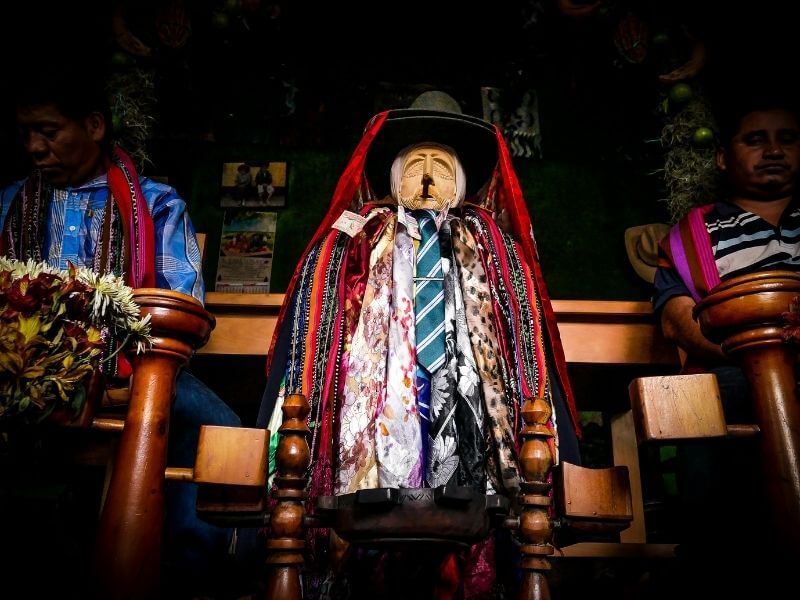
His backstory is also as bizarre and confusing as its present. There is no exact information who Maximón was, but this origin also vary depending on who you ask. One legend suggest that fishermen in Santiago Atitlan traveled frequently for trade and enlisted a man, Maximón, to protect the virtue of the wives they left behind. But instead, Maximón is said to have disguised himself as a loved one so he could have sex indiscriminately – becoming somehow the patron of the town. Other story talks about Maximón as the reincarnation of Rilaj Maam, a Mayan sorcerer who was considered the “gran abuelo” of Santiago Atitlan and who was murdered by conquistadors after their arrival in Guatemala. In both stories, local sorcerers found the ashes of this person near to a tz’atel tree and carved the body and the mask more than 400 years ago.
The two origin stories can’t differ more from one to another and as any cult in a place where Christianity dominates, worshiping a god that drinks, smokes and had sex with other people is seeing as too taboo to talk about. Articles about the bad habits of Maximón dominate the internet and the perception of Maximón as the cult god of the evil is spread all around the country.
Read more: Visiting Yaxha and Tikal – The metropolis of Maya culture in Guatemala
Read more: Exploring the Underwater Museum of Art (MUSA) in Mexico
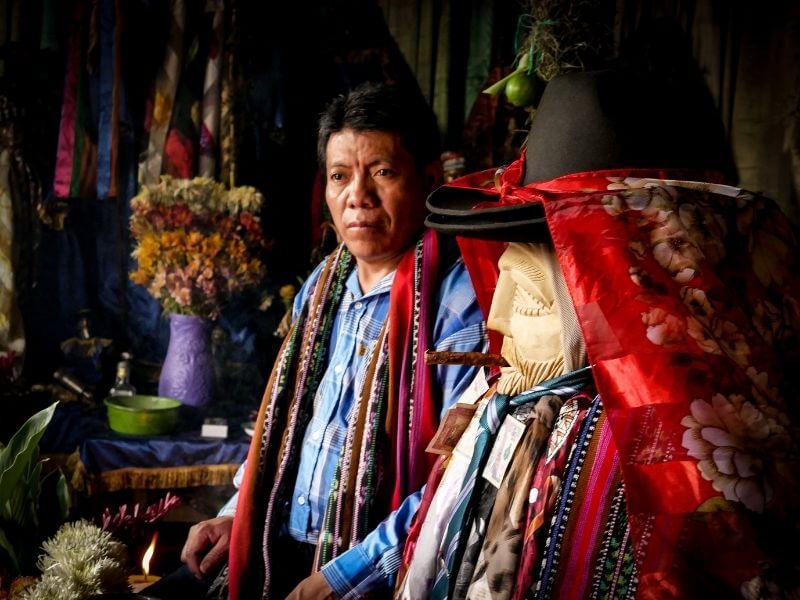
“It’s sad to see how people can’t understand Maximón”, said Pedro when we talked about these diverse opinions. According to him, why would anyone care if Maximón likes to drink and smoke. “These are not sins and therefore anyone should be free of doing it if they want to”, he added.
I visited Maximón expecting to find the god for the sinners. However, I ended up encountering a saint for those who want to keep traditions alive and feel left behind by the people around them. Just like the Tz’utujiil language is disappearing and nobody is noticing it, cultural pre-hispanic traditions like the worship of Maximón are disappearing too. And just like the Maya, we will only miss them, once they are gone forever.
Read more: Hiking Pacaya – Guatemala’s most active volcano
Read more: Explore the volcano route of Nicaragua
Read more: Tips for renting a car in Mexico
Read more: Islands of the Yucatan Peninsula – Isla Mujeres or Cozumel?
